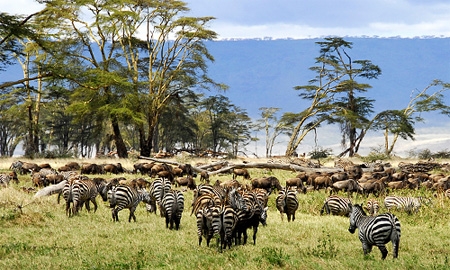Around 2.5 million years ago on the eastern border of the Serengeti National Park, the Ngorongoro volcano experienced a spectacular eruption, collapsing inward and creating the largest unbroken and unflooded caldera in the world, measuring up to 12 miles across and covering 102 square miles.
A magnificent haven of rich biodiversity and breathtaking beauty, the Ngorongoro crater floor is home to an impressive array of wildlife. Conservation efforts here make Ngorongoro particularly stand out from the herd. “This is the only place you find human beings and wildlife living together in harmony,” says Bernard Murunya, chief conservator of Ngorongoro Conservation Area Authority (NCAA). Also, half of the NCAA’s revenues goes to support local people.

0 COMMENTS